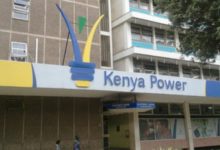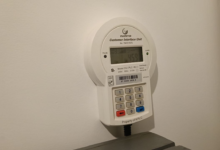
Fast urbanization, industrial growth, and growing acceptance of electrically powered options are pushing Kenya’s electricity demand to unprecedented levels.
In February 2025, the peak national electricity demand in Kenya reached a high of 2,316 MW against the record of 2,304 MW set barely one month earlier in January 2025.
As the number of residential units, commercial establishments, and electric vehicles (EVs) connected to the grid increases, KPLC is under increasing pressure to maintain a balance between demand and supply while upgrading the infrastructure to prevent cases of blackout.
Rising Electricity Use in Nairobi Households
The average Kenyan household in Nairobi has an annual consumption of 2,501 kWh, which equals approximately 6.8 kWh per day. The average monthly consumption would translate to approximately 208 kW,h, which is 7 kWh per day for pooled individual homes. Though such figures are small when taken in isolation, all these thousands of homes draw power together, and especially during peak hours, it puts an enormous strain on the grid.
How Kenya Power is Managing Peak Demand
To avert blackouts and overload, KPLC has instituted a myriad of measures:
- Diverting current loads that have reached their limits into balance: These diverted loads distribute electricity efficiently in different regions, thus avoiding localized strain.
- Voltage regulation: to prevent short and long fluctuations using capacitor banks and transformers.
- Industrial demand scheduling: Large factories are encouraged to shift some of their energy-intensive operations to off-peak hours.
Despite these measures, grid stability remains a concern, particularly as demand continues to outpace infrastructure expansion.
Battery Storage: A Critical Next Step
Kenya’s target for 100% clean energy by 2030 implies increased dependence on solar and wind power. These forms of energy are, however, intermittent; solar panels generate energy only during the day, while wind output is dependent on weather conditions. As a solution to energy shortages, Battery Energy Storage Systems (BESS) are being deployed to store excess electricity at times when it can be used economically and fed in during peak demand.
According to the Least Cost Power Development Plan (2021-2030) of the Ministry of Energy, there should be a minimum of 480MW of battery storage in Kenya to attain grid stabilization under peak periods. Areas such as western Kenya and the coastal region experience transmission bottlenecks under peak time, hence priority sites for BESS.
The major battery storage projects under development are:
- KenGen’s BESS pilots – Under the World Bank-funded GREEN program, KenGen is testing battery storage in Nairobi, Central Rift, and the Coastal Region.
- KETRACO’s battery installations – The transmission company plans to install storage at Suswa and Rabai substations, alongside a 400/220kV substation at Kimuka to improve network reliability.
With the primary focus on electricity distribution, KPLC will work closely with KenGen and KETRACO on battery storage development. This collaboration will become an essential asset in curbing blackouts and stabilizing supply.
Expanding the Grid to Meet Demand
In the last six months, 198,535 new customers were brought on board to the national grid. Although these connections validate some measure of electricity demand distribution, they add greater stress on the already aging infrastructure in Kenya.
The Last Mile Phases IV and V projects, funded by donors, will also be implemented by Kenya Power to connect, in total, 289,121 new customers to the national grid.
To address this, KPLC has been busy upgrading substations and transmission lines like the:
- The Kimuka 220/66kV substation, which supports four high-capacity 66kV feeder lines to strengthen Nairobi’s power supply.
- A 33kV double circuit interconnector between Narok and Bomet, designed to reduce regional power fluctuations.
Despite the launch of the services, the real challenge that lies ahead is the supply matching the demand in the coming years.
Electric Vehicles and the Growing Demand for Charging Infrastructure
There has been a shift towards electric vehicles (EVs) in Kenya which has put much pressure on the grid. To address this, KPLC has partnered with different organizations in the establishment of a national EV charging network:
- This will include 13 public EV charging sites by TotalEnergies Marketing Kenya in partnership with the E-Mobility companies Ampersand, Roam, and Arc Ride.
- BasiGo, a local electric bus firm, installs public charging stations in several places in Nairobi, including Embakasi, Kikuyu, and Buruburu.
- Moja EV Kenya, a Chinese company that specializes in e-mobility, plans to roll out 100 EV charging stations all over the country by the end of the year, with the first 80kW DC fast charging station already launched in Nairobi.
The latest initiative KPLC has commissioned toward accelerating EV adoption is partnering with NCBA Bank to offer affordable financing solutions for individuals and businesses interested in purchasing electric vehicles. The plan would ensure that appropriate charging infrastructure keeps abreast of demand, making EVs affordable.
Such strides may indeed open more frontiers in the existing EV ecosystem, but they are also a harbinger of a possible increased strain on Kenya’s power grid, especially during peak hours.
E-Cooking and the Shift Away from Fossil Fuels
The promotion of electric cooking (e-cooking) as an alternative to charcoal and LPG is in full swing in Kenya. As induction stoves and electric pressure cookers gain more popularity with households, peak demand for electricity is likely to increase.
As a result of the eCooking programs supported by the Government, KPLC has observed a change in energy consumption patterns as homes are now moving towards electricity-based cooking solutions. The transition also calls for a more robust and flexible power grid that will handle the demand options.
Is Kenya’s Power Grid Ready for the Future?
With electricity demand expected to rise by 6.5% a year from 2025 to 2027, KPLC’s significant challenge lies in assuring supply reliability. Investments in new substations, in battery storage, and in EV charging infrastructure will support supply reliability, but the real test will come about whether these improvements can match the pace of demand growth.
While Nairobi expands and industries continue to electrify, the power sector has to be agile; otherwise, it risks falling behind in the energy security race. The next two to three years will define if Kenya’s grid will be able to support the country’s ambition of clean energy or drastic intervention will be called for to avert supply shortfalls.
Follow us on WhatsApp, Telegram, Twitter, and Facebook, or subscribe to our weekly newsletter to ensure you don’t miss out on any future updates. Send tips to editorial@techtrendsmedia.co.ke




